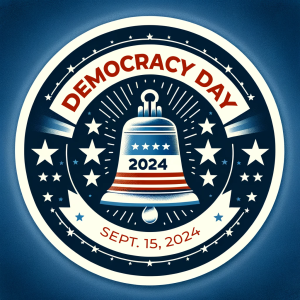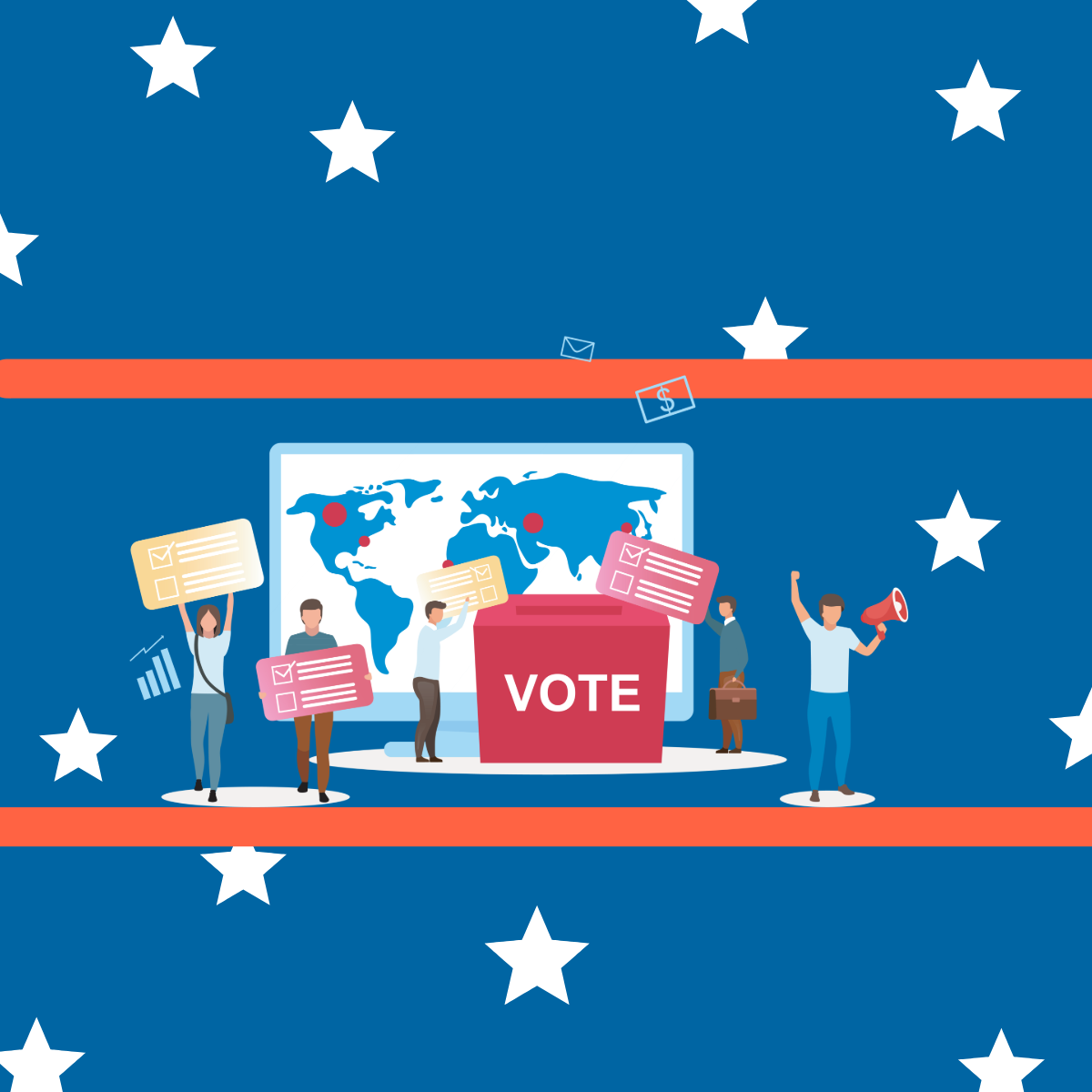This story is published as part of U.S. Democracy Day and the Utah College Media Collaborative, a cross-campus project bringing together emerging journalists from Salt Lake Community College, the University of Utah, Utah State University and Utah Tech University.
With the historicity of this year’s presidential election in mind, it is important for first-time voters and other younger voters to know where to vote and how voting works in Utah.
A few students at Salt Lake Community College have expressed that they feel well-educated on the process of registering and voting, even though some research and sentiments claim that first-time voters and other college-aged voters can occasionally be underinformed about the process of voting.
Philipe Garcia, an anthropology student at SLCC, said registering was something he was unfamiliar with. He said he only became registered through the luck of needing to renew his driver’s license, which allowed him to update his voter status.
“I personally don’t really know how to do it,” Garcia said. “I am [now] advocating for workshops to give people the opportunity.”
Barriers to voting
One barrier young voters have reportedly faced during election season is a lack of information regarding deadlines to register.
Data from Tufts University’s CIRCLE, or Center for Information and Research on Civic Learning and Engagement, states that 21% of young people who didn’t vote in 2022 said they didn’t know enough about the candidates or the voting process. Nine percent of voters who didn’t cast a ballot last time “had problems with in-person voting or their absentee ballot.”
Out-of-state voting via absentee ballot thus confuses some first-timers. As stated in the “voting as a student” section of vote.gov, voter registration is tied to where a person lives, so a student can choose to vote in either their hometown or their college town.
Factors that affect this decision may include whether a student’s hometown has different local issues on the ballot than their college town, as well as possible differences in the candidates and seats up for election.
If a student plans to vote in their college town, updating their registration address is important. Students do not necessarily need to cancel their registration first, but cancelling and re-registering within the college town might aid local election officials.
Another barrier some voters could face involves submitting ballots. In 2022, according to a CIRCLE survey, 32% of voters mailed in their ballot, compared to 27% who used a mail-in ballot in 2020.
The same CIRCLE survey determined that some youth may have chosen not to participate in voting because they were counting on the ease of drop-off at ballot box locations; some states implemented restrictions on voting times and polling places.
In Utah, mail-in ballots are sent to voters from Oct. 15 through Oct. 29. To send them back, a ballot must be postmarked before Nov. 4, the day before Election Day, or dropped off at a ballot box before 8 p.m. on Election Day, Nov. 5.
If a voter’s ballot does not arrive shortly after the scheduled mailing dates and the voter plans to participate in this year’s election, the voter may need to contact their designated elections clerk, or else, plan to vote in person.
Another barrier to voting for college students, however, is more political, and has to do with the federal election system itself.
There are reported worries about the Electoral College among young voters. The US voting system is a shared concern among some students at SLCC — influencing and even becoming the deciding factor if they choose to vote at all this election season.
“I hope it actually makes an impact,” Aria Kelson, a student at SLCC, said while describing her nervousness about the Electoral College. Regardless, Kelson said she is still excited to participate and have a voice in the presidential election.
Krystyna Cooper, a criminal justice major at SLCC, shared similar concerns. She said that the Electoral College’s existence has swayed her away from voting in the past.
“If it was truly up to the people — truly, strictly up to the people — then I would vote,” Cooper said.
Garcia also shared thoughts on this year’s presidential candidates, saying he doesn’t believe either one to be a “best” option for him. Garcia said he has decided to vote at the local level and opt out of the federal section of the ballot.
“[The presidential candidates] wouldn’t be representative of what I am or what I want,” Garcia said, adding that neither popular political party is appealing this year.
“I feel like I am more likely to find that [adequate representation] at a local level, comparatively,” Garcia continued. He finished by expressing that voting and participating in the US democracy is still important to him.
Voting processes in Utah
The last day to register to vote in the 2024 election is Oct. 25, while in-person registration has a deadline of Nov. 5, meaning that you can register at a polling station. Regardless of opinions on the candidates for president or the Electoral College, there are many resources available to assist first-time or otherwise younger or underinformed voters.
Vote.utah.gov has information on registering to vote, mail-in ballots and how to find information on other candidates that will appear on the ballot besides the presidential nominees.
To begin the online registration process, the state’s voter information website allows an individual to check their registration status, update their voter information or cancel voter registration. Those registering will be prompted to fill out their physical address, mailing address, driver’s license, social security number and birth information. Residency details will be required for those working in the military or study abroad students.
Lastly, those registering may specify a political party affiliation, but the deadline to choose a party in Utah, which determines the primary election ballot a voter receives, occurred in January.
While registering online is one option, in-person registration may also be available through a Department of Motor Vehicles, a local elections office such as a county clerk or by mail with a National Mail Voter Registration Form.
On Election Day, various polling stations, determined by the county one resides in, will be open to constituents. Polling stations can usually be found at city halls, libraries and local school district buildings.
Voters can find a more detailed look at the nearest polling station in each area of Salt Lake County by visiting the Election Day Vote Centers map, which is provided by the Salt Lake County clerk’s office.
It is imperative to remember that if a resident chooses to vote in person, a valid ID will be required.
Helping students vote
SLCC provides resources to assist first-time voters and those who feel underinformed on the voting process in the slate of events known as “SLCC Votes.”
“SLCC Votes” events, hosted at the college’s Thayne Center, will include National Voter Registration Day and National Voter Education Week, both of which help students prepare for elections by teaching them about their ballots and how to make a voting plan. The goal of the events is also to inspire students to vote in the first place, according to the website.
Election season events at the center will culminate in an Election Day celebration, where students can watch and partake in festivities as votes are tallied up around the country.
Savannah O’Sickey, student event coordinator for the Thayne Center at SLCC, said that part of the reason the “SLCC Votes” events are being held is to inspire and engage students in the voting process.
“Students play a really important role in elections. By voting we have the power to say who’s in charge of creating policy and what issues are on the table,” O’Sickey explained.
“Making sure students feel empowered to vote is our focus, but [it’s] also making sure they feel like voting is an easy process,” she continued.
Aside from increasing voter engagement and helping young voters find ease in the process, O’Sickey said the center also tries to make sure students who may be unable to vote still feel engaged and their voices heard.
Learning how to write to a politician, create change on campus, and easing the voting process are all concepts that are encapsulated and explored in the “SLCC Votes” events.
“A campus exists as a space to support students not just in their school, but in their life,” O’Sickey said. “Voting is a right for everyone [and] having the tools to empower students to vote creates a thriving environment”
If a student is unable to make any or all of the events, however, the O’Sickey said the center is now trying to become a “one-stop shop” for students by always making voting resources available.
Outside the “SLCC Votes” events, students can stop by the Thayne Center at any time between now and election day to pick up a registration form or receive help with the registration process. The Center also provides stamps and envelopes for mail-in ballots and registration forms.
A seamless voting experience is the center’s goal and may make a difference if even one student feels their voice is heard in this historic 2024 presidential election.

Ashley Orduna reported and wrote this story as a student with Salt Lake Community College’s The Globe. Her article is part of U.S. Democracy Day, a nationwide collaborative on Sept. 15, the International Day of Democracy, in which news organizations cover how democracy works and the threats it faces. To learn more, visit usdemocracyday.org.


